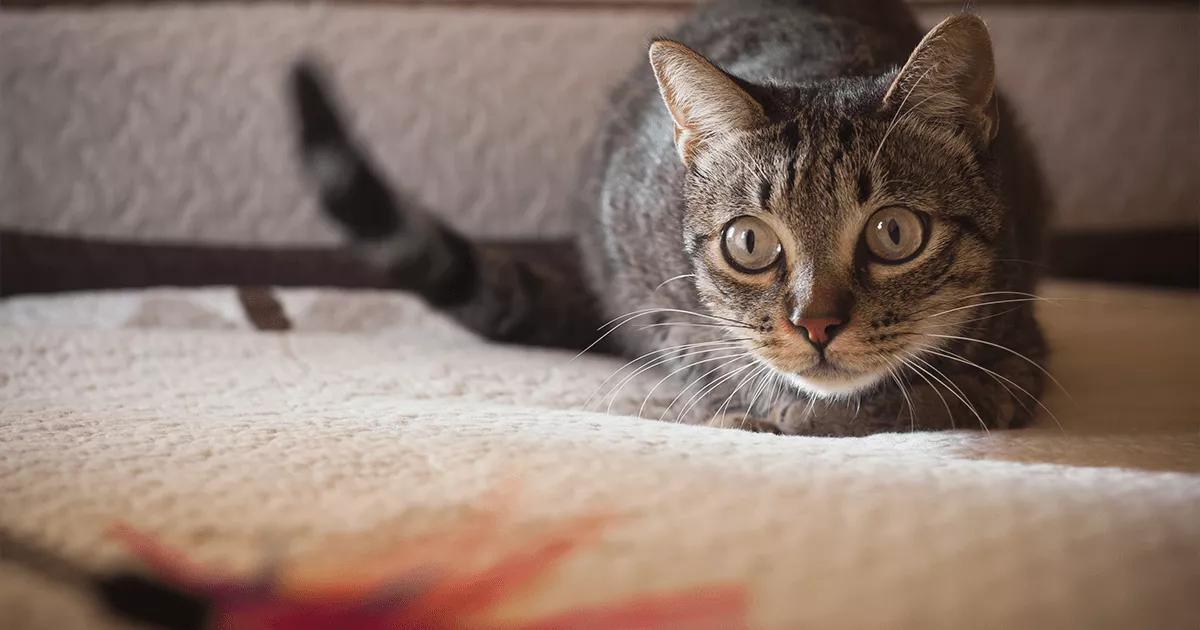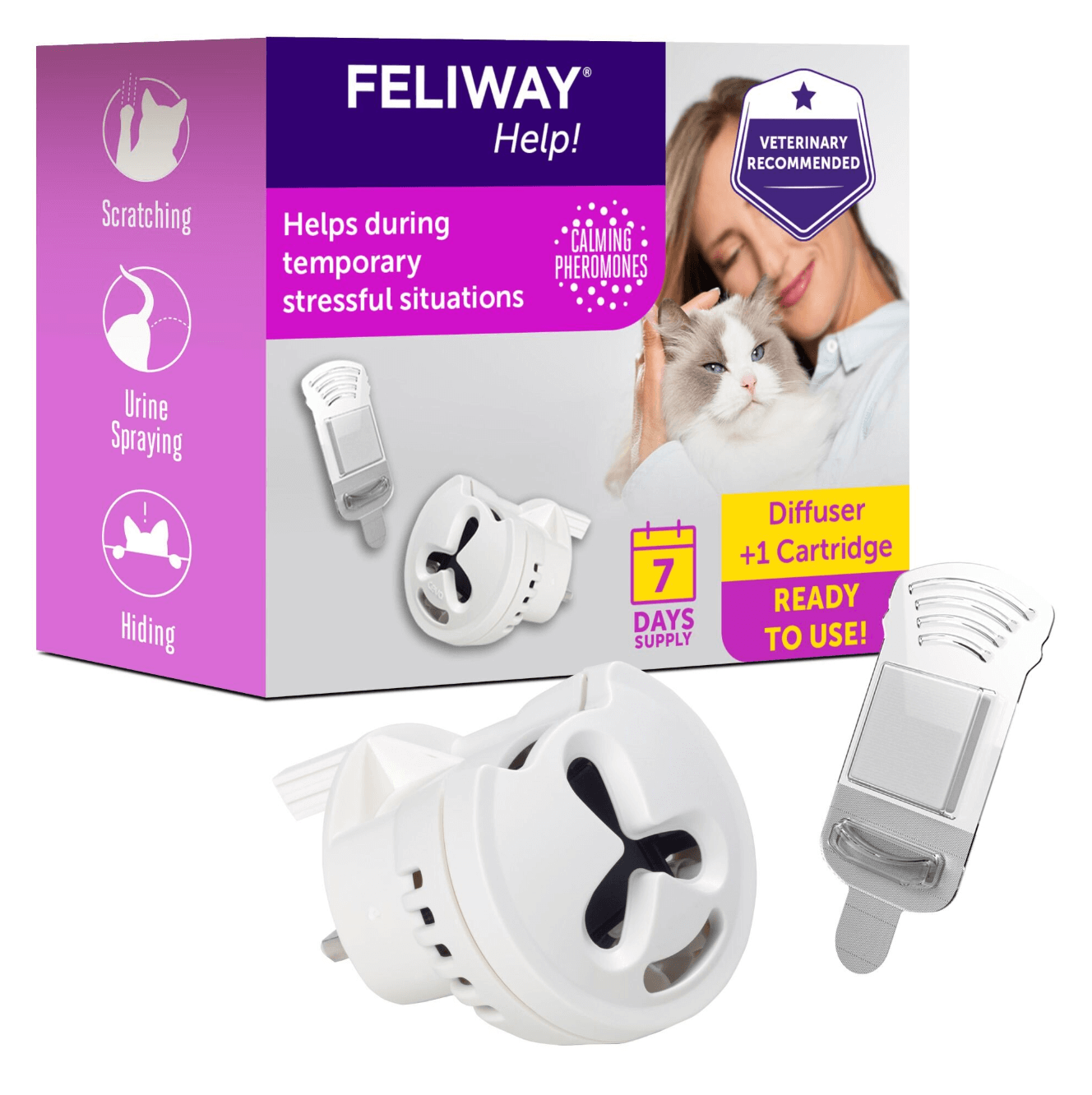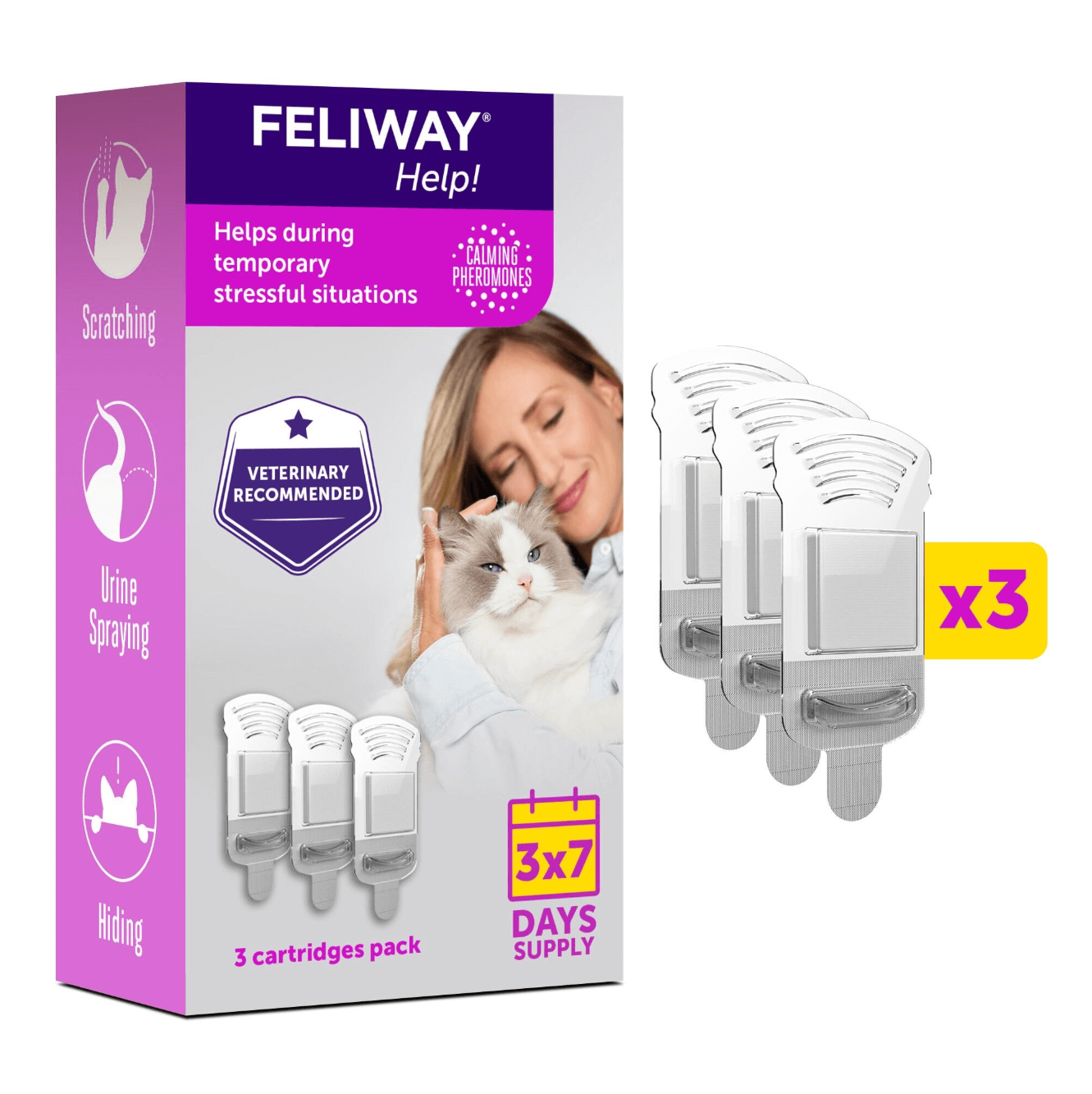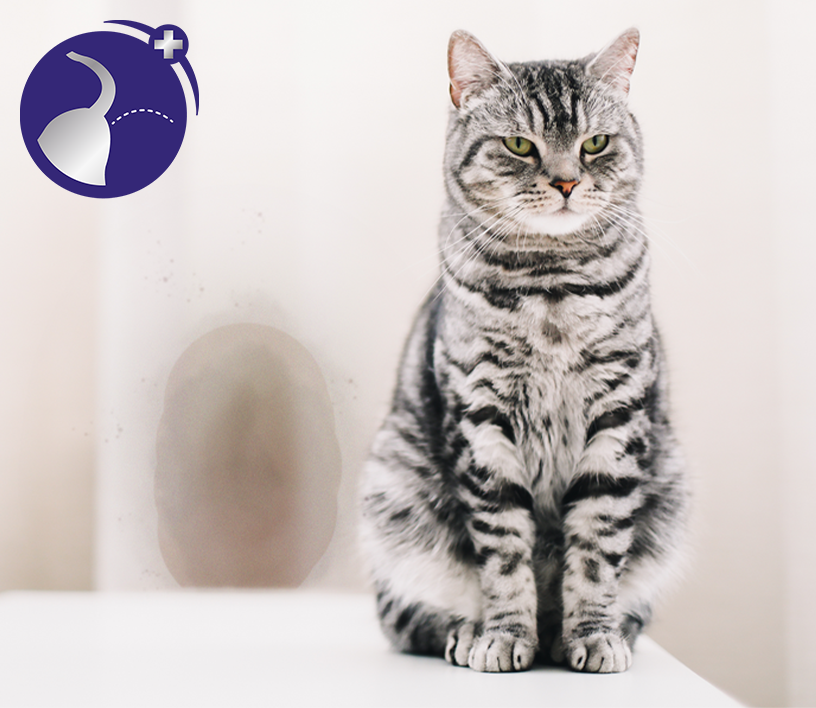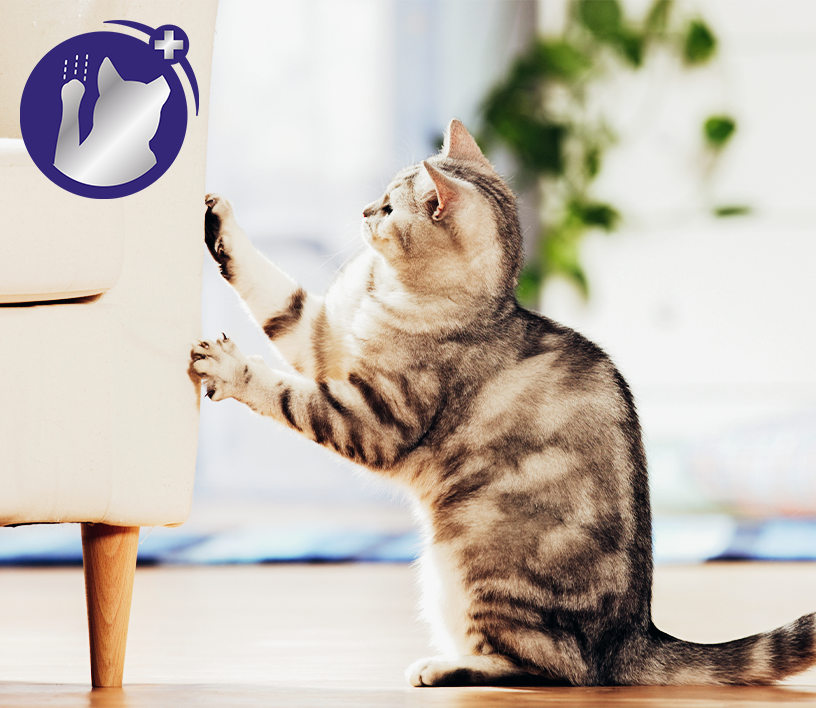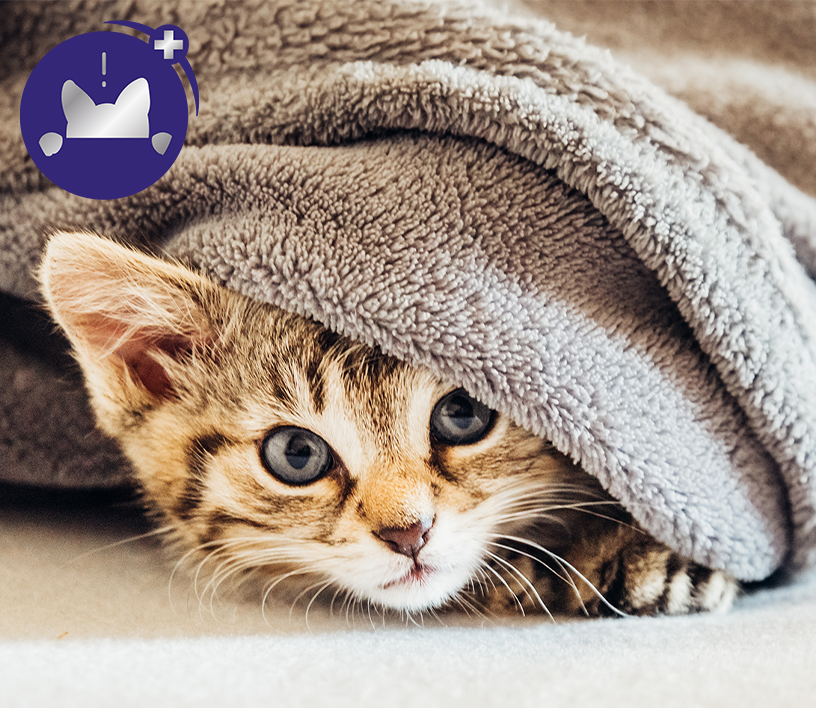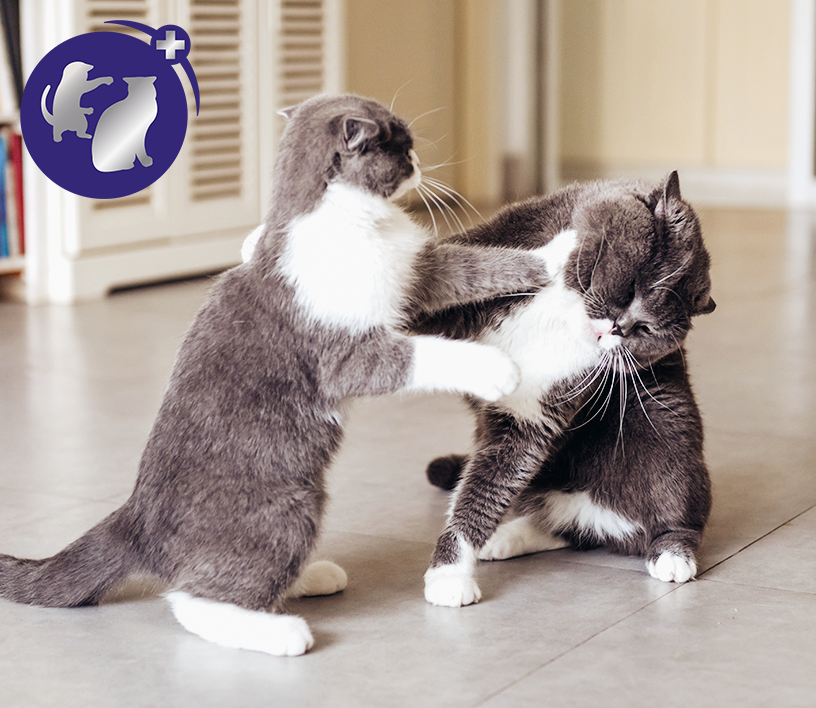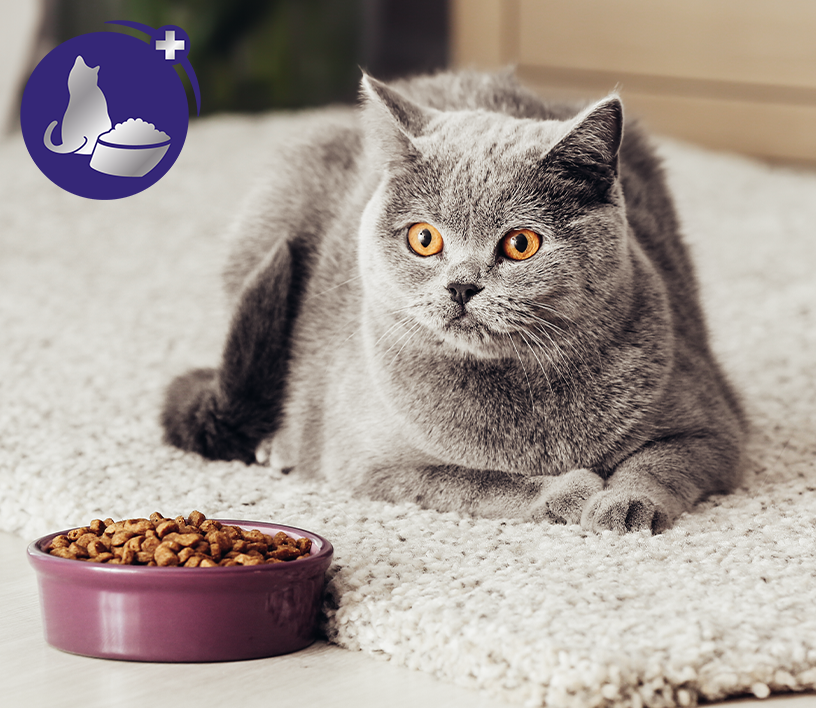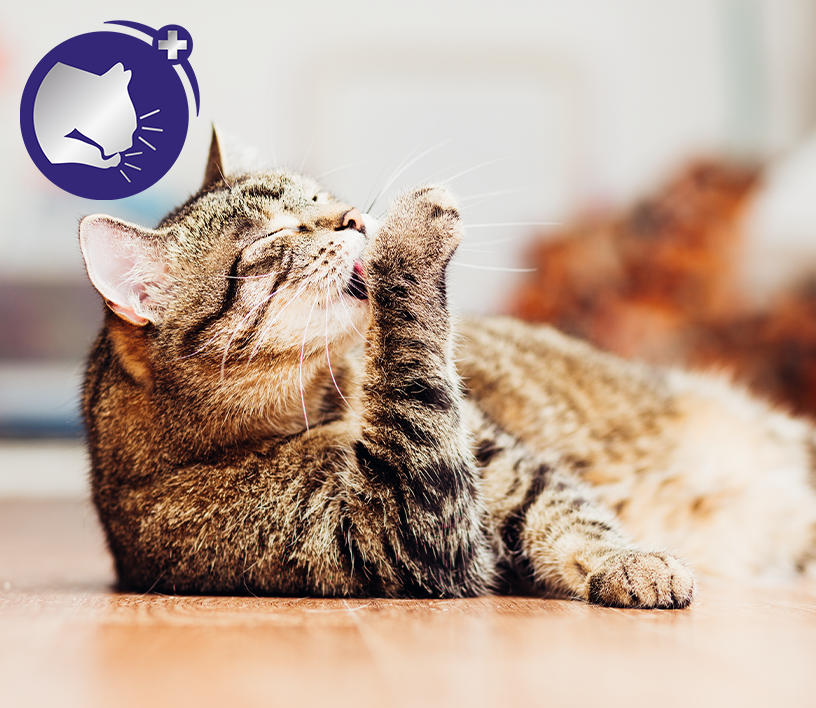
9 tips to help your cat stay active
It might be assumed that exercising a dog is easier than exercising a cat – you can take a dog for a walk, and they like to play fetch!
But keeping your cat active is just as easy and important. Plus, it helps them maintain a healthy weight, provides mental stimulation and strengthens your bond.
How to help your cat stay active
When cats are stressed or nervous, you may find that they get withdrawn, are less tolerant or they hide away. This could mean they are not getting enough exercise to keep them fit and healthy.
It’s important to recognise the signs of an unhappy or stressed kitty and act to help them feel more relaxed. Using FELIWAY Optimum will reduce stress-related signs and help your cat feel more serene, so that you can help them become more active and stay fit.
Cats are instinctive predators who love climbing, hunting, chasing and pouncing, so it makes sense to provide opportunities for them to tap into these skills in a domestic situation. Here are 9 tips on how to exercise your cat.
1. Encourage them to climb
Jumping on the back of a sofa, leaping onto the top of a cupboard or springing up on a shelf are ideal ways to help your cat to climb to new heights. Cats love to survey all that is happening around them, so providing great vantage points at different heights will not only provide them with excellent exercise opportunities, but it will provide safe spaces for them too.
Multi-tiered cat towers also provide great climbing opportunities, as well as scratching areas that will help them stretch out fully and keep their claws in tip-top condition.
You can even construct your own cat furniture so that they can climb to their heart's content – with the added benefit that it will blend in with your home decor too!
2. Play to their hunting instincts
Cats still hunt in the wild for their prey and will follow a scent for miles in order to secure food. Try setting up your own scent game by placing small treats in different areas of the house – this could be under the bed, behind a cushion or strategically placed on shelves at different heights to encourage them to hunt them out.
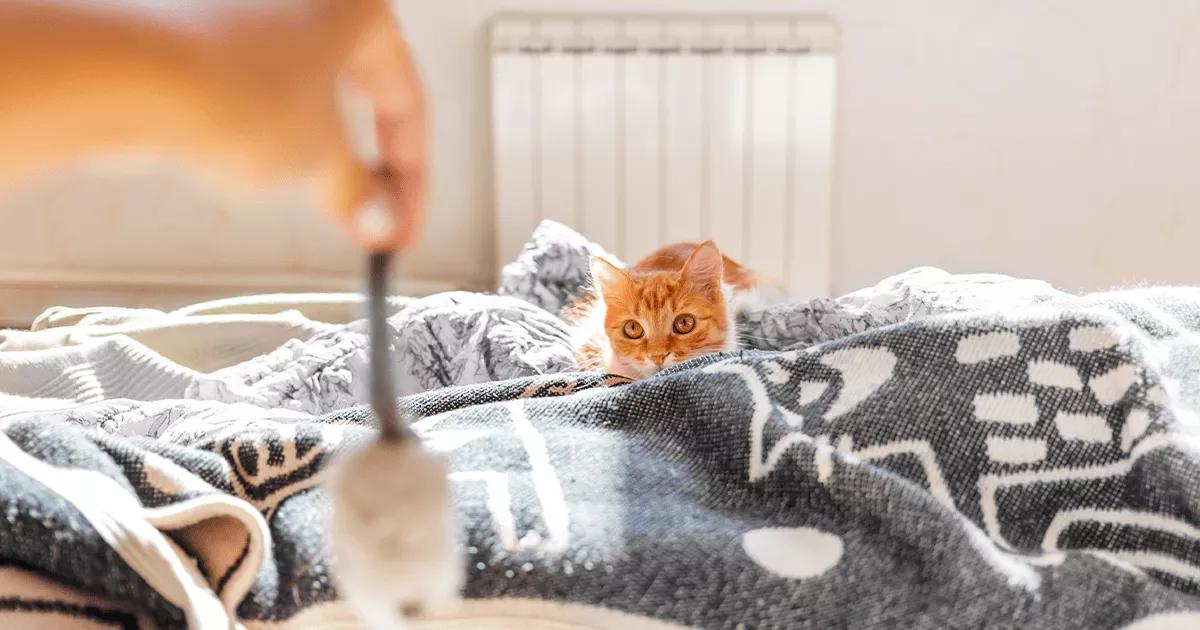
3. Set up the chase
Whether it be a falling leaf, a feather, a laser beam, a fly or a mouse, cats love to chase – but don’t forget they also love to catch! A feather toy, or a toy mouse on the end of a fishing-style rod can provide you both with lots of fun when dangled in front of your cat.
You could also try rolling a small table tennis ball along the floor for your cat to chase, giving them exercise in the process. But remember to avoid frustration and allow them to be successful in their catch!
4. Stalk and pounce
This is a natural behaviour for a cat. In the wild, they will stalk their quarry, often from behind a bush, then when they think the time is right, they will pounce to catch their prey.
You can emulate this by placing a toy mouse on the end of a string and pulling it along the floor slowly. Make it even more realistic by pulling it from behind a chair or cushion so that they can stalk it until it appears, then pounce on it.
5. Enhance their mental stimulation
Mental stimulation is as important as physical activity, and you can make sure your cat benefits from both at the same time.
There are many different puzzle/activity feeders available, or you can simply cut out the ‘cups’ from an egg box and fill them with food (from their daily allowance) and scatter them around the house in different locations (high and low). This will exercise their body and their mind!
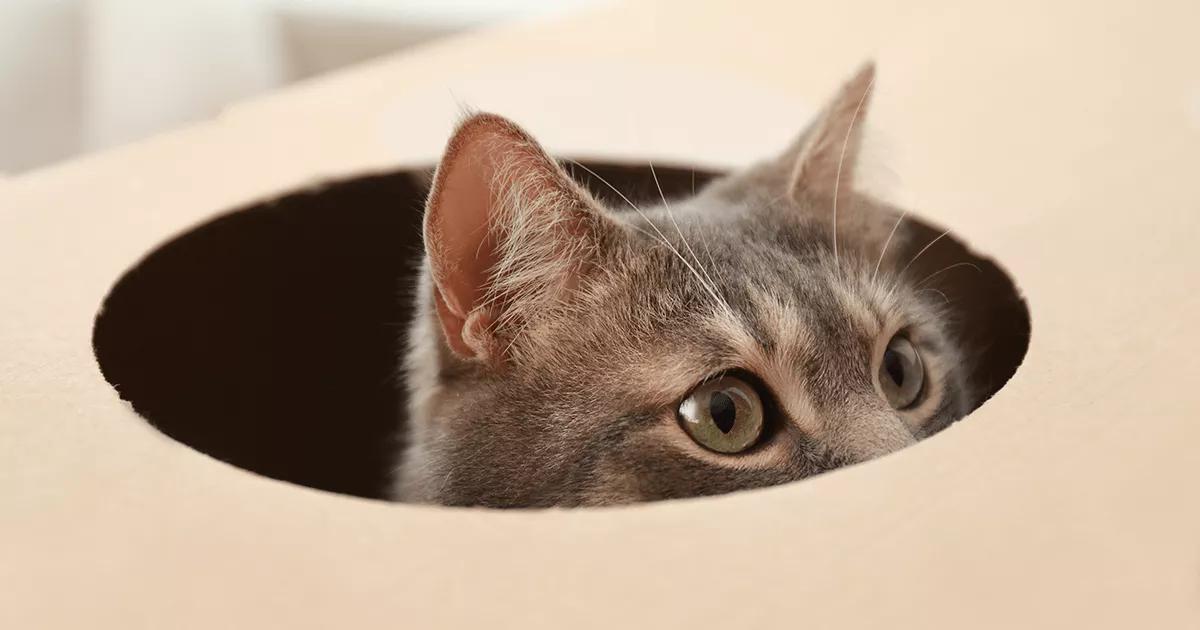
6. Feed their curiosity
Cats love to hide, and never more so than when there’s a cardboard box around. Why not save up a few from your deliveries and make a cat castle for your FFF (favourite feline friend)!
Tape boxes together for stability, pile them up to give height, and cut holes in them to provide access from one to the other. Don’t forget to add a comfy cushion inside so they can rest when curiosity gets the better of them.
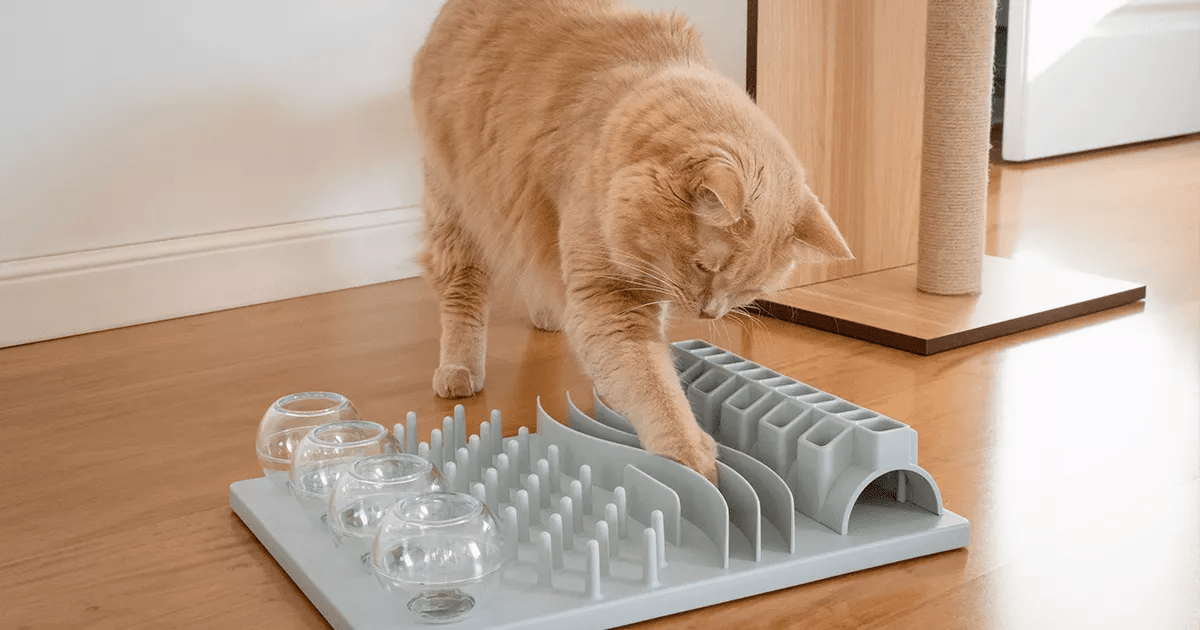
7. Teach them fun tricks
Cats are independent creatures by nature, but that doesn’t mean they cannot be taught to follow simple cues (or even be trained), which can also help to use up some of that boundless energy they have.
Build a simple obstacle course for them to crawl through, climb over or jump upon – but concentrate on teaching them one obstacle at a time, using clear signals, before you move on to the next. Entice them through the course with small treats and remember to stop if they begin to show signs of disinterest.
A good time to teach them new tricks is just before meal time, when they are most motivated by food!
8. Provide outside access
If you have an outdoor cat, they will likely get lots of exercise climbing trees, exploring the undergrowth and chasing birds and other prey. Being outside also provides lots of mental stimulation – there’s lots to see, smell, hear and explore!
If you have an indoor cat, you may want to consider allowing them some outside access while wearing a leash or harness, so that you can keep control of the distances they travel.
Alternatively, consider building a ‘catio’ – an enclosed outdoor space for cats that can give them the experience of being outside, while preventing them from roaming. These can be constructed to include logs, trees, a comfy bed and even some cat-friendly plants.
9. Bonus tips
- Keep any play sessions short (about 10-15 minutes is normally enough for a cat).
- There are many toys on the market that are made to keep your cat busy, but why not try your hand at making some? From a knitted toy bird to a kitty crèche, a cat hammock to a cardboard scratcher – here are some great ideas to help you and your cat stay active.
- Alway put away toys that could be dangerous to play with unsupervised, such as electronic toys, or those with strings.
- If you find that your cat has become less active than normal and they can’t be encouraged to join in any activities, it’s always good to have them checked out by your vet to rule out any underlying issues.
